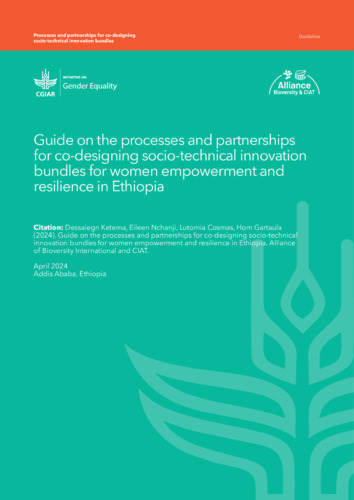Guide on the processes and partnerships for co-designing socio-technical innovation bundles for women empowerment and resilience in Ethiopia
This executive summary documents the processes and partnerships needed in co-designing socio-technical innovation bundles for women empowerment and resilience (not forgetting men and youths) in Ethiopia. Effective and constructive documentation plays a crucial role in ensuring operational efficiency, fostering collaboration, and maintaining consistency. Additionally, establishing and nurturing strong partnerships leads to enhanced opportunities for growth and success. Documenting processes are essential for several reasons. Firstly, it enables organizations to capture the process and preserve valuable knowledge and expertise needed and engaged in co-designing and implementing Social-Technological Innovation Bundles (STIBs) for women’s empowerment and
resilience in Ethiopia and elsewhere. This ensures that critical information is not lost when projects are phasing out or transitioning roles. Secondly, documented processes promote consistency and standardization, minimizing confusion and errors.
It also provides the opportunity for replications by other institutions or next users who can scale out or up these innovations. Moreover, documenting processes facilitates continuous improvement by providing a baseline for analysis and optimization.This guideline is part of the toolbox developed by the CGIAR Gender Equality Initiative (HER+) to guide the process of identifying and documenting the entry points for designing and implementing context-specific and gender-responsive STIBs that have explicit outcomes for women’s empowerment and climate resilience. It helps to understand the local contexts and provides guidance to document inclusive and context specific processes and partnerships with the farmers and other relevant stakeholders.In conclusion, documenting processes and building strategic partnerships are critical aspects of organizational success ensuring operational efficiency, knowledge retention, and continuous improvement. Meanwhile, partnerships open doors to increased resources, expertise, market reach,and risk mitigation. By focusing on these areas, organizations can optimize their operations and unlock growth opportunities in today’s dynamic business environment.

